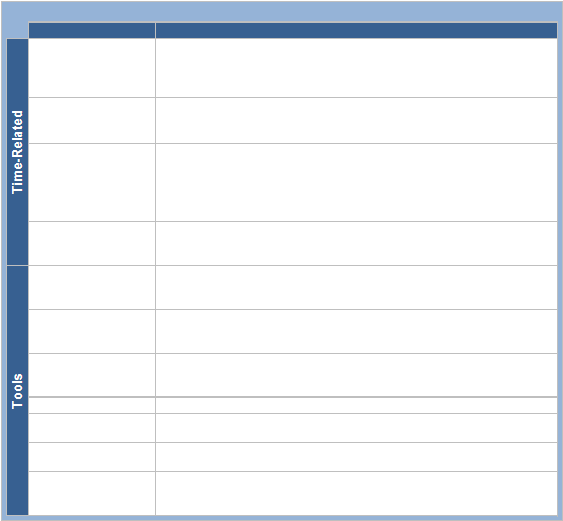

Project Team Rewards
Results
49
Although, no project team reward model was needed, a detailed analysis in how far the
reward answers are influenced by the project characteristics seemed necessary. As long as
the impact of the project characteristics is not clear, it seems likely that a reward system
for project teams cannot be as effective as it could be. Hence, project team motivation
cannot be optimal and project success become less likely.
Table 14: Project Characteristics II
Characteristic
Remark
Project Stages
The PMI (2004) divides projects into Initial, Intermediate
and Final
Stages. During
these stages, completely different types of work are done and different people may be
involved (Munns & Bjeirmi 1996). This is different to line work where work is repeated
all the time.
Member Fluctuation
Since during the different project stages different tasks have to be done, different
people often do these tasks. These people only join temporarily the project and leave as
soon as they finished their task(s).
Duration
A is project is only of limited duration and has a start and end point in time (PMI 2004).
This is completely different to permanent line work. The purpose of line work is to
sustain business continuingly; the purpose of a project is to "terminate" after delivering
the objective (PMI 2004:7). This is the reason why projects do not appear on
organisational charts (Kerzner 2004).
Degree of Urgency
Project's have different degrees of urgency (Westerveld 2003). Some are more urgent,
some less. The more urgent a project the higher the time pressure during the project
and the earlier the starting point (Frame 2002).
Work Breakdown
Structure
A Work Breakdown Structure divides the project's main deliverable into several sub-
levels whereas the lowest level usually contains all activities that are necessary to
deliver the main deliverable.
Gantt Chart
A Gantt Chart contains all the project's activities and displays them graphically as bar
chart on a calendar/time line. It is used to schedule the activities and control if the
project is on time.
Network Diagram
A Network Diagram focuses on the dependency of the single activities. It displays which
activities have to be completed before the next one can start. The Network Diagram may
contain the critical path.
Earned Value
Earned Value is a method to control the progress of a project.
Milestones
Milestones indicate points in time where a relevant amount of work should be
completed.
Critical Path
The Critical Path shows those activities that are critical for the project. A delay of one of
the activities will result in a delay of the project.
Project Management
Software
Special project management software exists that may support project managers with
their daily work.
Table 14: Project Characteristics II
| Please note: All rights of this webpage are reserved. No part of this webpage may be reproduced, stored in a retrieval system, or transmitted in any form or by any means electronic, mechanic, photocopying, recording or otherwise without the prior written permission by the author. This html version of the book Project Team Rewards: Rewarding and Motivating your Project Team is not suitable for referencing since page numbers and layout may differ from the original book. Layout flaws are due to converting difficulties from the original file format to html and are not present in the paper copy of the book. |

